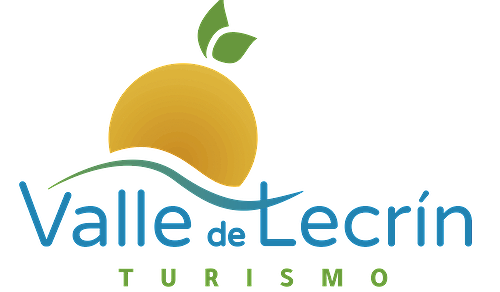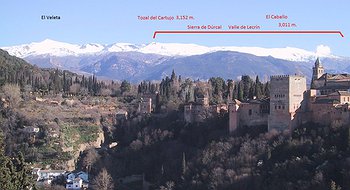 Dúrcal, Pearl of the Valley, Tiara of the Alhambra
Dúrcal, Pearl of the Valley, Tiara of the Alhambra
A few days ago I began to remember the beautiful places I have been and lived in Dúrcal. I found a series of coincidences, which I have enjoyed since I was little and I’d like to revisit here.
The Sierra de Dúrcal is the "Tiara of the Alhambra", because one of the best views of Granada is the Alhambra seen from the San Nicolás viewpoint. The section of Sierra Nevada that can be seen like a tiara above the Alhambra, is the 5 km of snow in the Sierra de Dúrcal, Lecrín Valley, from the peak Pico del Caballo (3,011 m) to the peak El Tozal del Cartujo (3,150m), both part of Sierra Nevada.
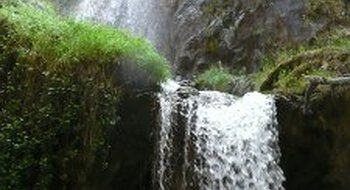
Five are the waterfalls along the Dúrcal River, which in summer I like to visit to cool down under them. There is no better or more natural hydromassage. However, I have to choose very hot days, because the water is so cold you cannot spend long under the impressive jet of water: Canal de Fuga, Los Bolos, El Triplete, the Poyos Waterfall, and the Tiger. These last three nestle in a very little-known place difficult to access, as you have to use climbing equipment and take great care.
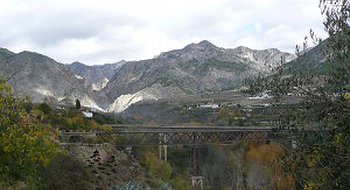
History has left us 5 very original and different bridges, both for their size, materials used and time of construction. The oldest and smallest, the single-arch Roman bridge. The Stone Bridge or Isabel II Bridge, with 7 arches. The Tin Bridge, similar in construction to the Eiffel Tower, is made of iron, without welding, all assembled with rivets. The Cement Bridge on the N-323 and the Motorway Bridge, both of modern construction, made of reinforced concrete and with sliding formwork.
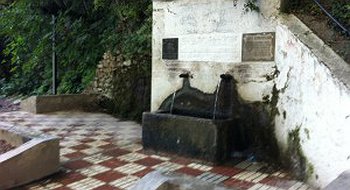
My town has many water sources, but there are 5 prestigious and well-known ones: El Pilar del Mono, where you’ll always see people filling up their bottles and carafes; the Urquizas Spring, with mineral-medicinal waters, and its two baths, for taking the waters by immersion. The Vacamía, with hot springs; The Fuentes where in the past the women of the town used to meet to wash clothes, and the source of the Dúrcal River in the Carnero Lagoon.
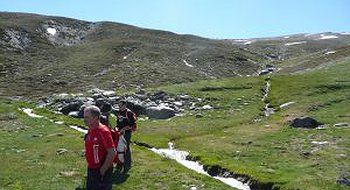
Necessary for cultivating this varied and rich land are the 5 irrigation ditches, some of Arab origin: The highest, Acequia de los Hechos, takes the water from over 2,500 m going to Nigüelas, to supply the power plant, and returns to Dúrcal through the Acequia del Torrente. The Marchena and Márgena Acequias (irrigation ditches), which emerges from the river on both banks, under the Canal de Fuga waterfall. And the Buenavista Canal, west of town.
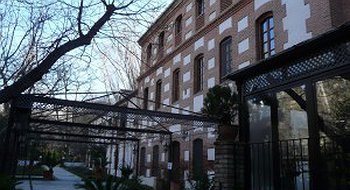
Along the river, in its section below Dúrcal, there are 5 beautiful mills, the Bio-Dúrcal Mill or the Puente Mill, a restaurant and rural accommodation; the Farm School, which is used so that children can receive an environmental and ecological education; that of the Roman bridge, which is at the junction of the path from the river's source; the mill below the source or Molino Alto, and the mill in ruins or Restaurante del Molino, both along the path of Las Fuentes.
My town has 5 neighbourhoods, where as a child I used to roam, playing tag, after school, we never got tired of running around the town, visiting these charming neighbourhoods: Almócita, El Darrón, Balina, La Plaza and the Barrio Bajo.
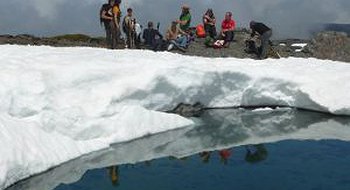 You can also visit 5 spectacular viewpoints or miradores: The viewpoint over the bridges, from where we can see the River Durcal’s 5 bridges. The one of the Barranco de los Lobos, in front of the power station, at the entrance where the river flows from the mountains to the plain. The Rock of the Moors, where the Arabs had their watchtower both for defense and communications. The viewpoint of the Casilla del Agua at an altitude of 1,625 m and finally, the highest, the Pico del Caballo at 3011m from where you can see Africa.
You can also visit 5 spectacular viewpoints or miradores: The viewpoint over the bridges, from where we can see the River Durcal’s 5 bridges. The one of the Barranco de los Lobos, in front of the power station, at the entrance where the river flows from the mountains to the plain. The Rock of the Moors, where the Arabs had their watchtower both for defense and communications. The viewpoint of the Casilla del Agua at an altitude of 1,625 m and finally, the highest, the Pico del Caballo at 3011m from where you can see Africa.
For the best holiday in the Lecrín Valley, remember that here, on the Lecrín Valley Tourism website, you can book your accommodation, your activities or your restaurant directly with the owners. Who better to help you plan everything? And without any commissions!
GO TO BLOG
